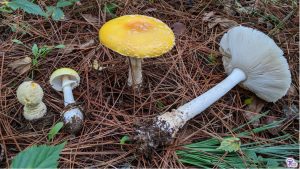#078: Evolution of Mycorrhizae
Arbuscular mycorrhizae have been around since plants began to colonize the land and were probably instrumental in that transition. Ectomycorrhizae and ericaceous mycorrhizae evolved during the time of the dinosaurs and were successful because of their ability to extract organic nutrients from the well-defined soil. Orchid mycorrhizae were the last to evolve. This probably happened around the same time as mammal lineages started to diverge. Despite the tens to hundreds of millions of years of symbiosis, coevolution does not appear to play a large role in the evolution of modern mycorrhizal partners.







![#011: Characteristics of Kingdom Fungi [Archived]](https://www.fungusfactfriday.com/wp-content/themes/hueman/assets/front/img/thumb-small-empty.png)

